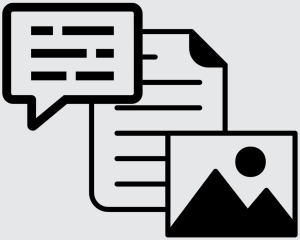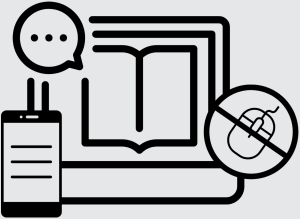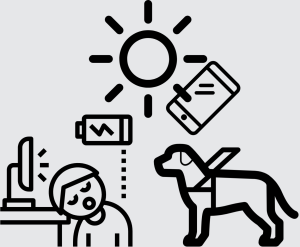Digital Accessibility
Digital Accessibility
“The one argument for accessibility that doesn’t get made nearly often enough is how extraordinarily better it makes some people’s lives. How many opportunities do we have to dramatically improve people’s lives just by doing our job a little better?”
Steve Krug, Don’t Make Me Think, Revisited
Digital technology is so ubiquitous that it is difficult to think of many activities that don’t rely on some kind of technology. Many people may take for granted that things just ‘work.’ What if something you used everyday didn’t work? What if you couldn’t read your email? What if you couldn’t log in to your online banking? What if your computer speakers suddenly stopped working?
Every day people encounter something that doesn’t work for them. A PDF that cannot be read aloud may not effect you, but for some that inaccessible PDF might as well be blank. A form that says ‘fill out the forms marked with red text’ may make sense to you, but some people will not be able to decipher which fields to complete. A video without subtitles excludes anyone that cannot clearly hear the audio.
Accessible digital content can be:

Accessed,
Consumed,
Interacted with,
by everyone,
at the same time.
Accessibility accounts for a diversity of access means.

Access means could include:
- Device, such as a computer or phone.
- Control, e.g. without a mouse.
- Software, like text to speech tools or voice control.
-
Customization including increasing font size or inverting colour schemes.
Consider that access means can be influenced by something:

- Persistent, for example blindness.
- Temporary, like eye strain.
- Situational, such as glare from the sun.
Access means may also change over time.
According to Statistics Canada, 27% of Canadians have a disability.[1] However, educators cannot rely on accommodation requests, or lack thereof, to decide when to make accessible content. 96% of disabilities are “invisible”, that is they are not outwardly visible to the casual observer.[2] There is no way to determine who accesses content in what way by looking at them. Additional statistics suggest only one-third of college students with a disability disclose their status.[3] Further, 94% of high school students with disabilities get some form of assistance, while that number drops to 17% at the college level.[4] Accessible content is built for everyone and reduces the need to accommodate specific cases, increases the usability of content, and maximizes the independence of all users. Accessible content is designed for a universal audience.
Accessibility is not a feature, inaccessible content is a bug.

